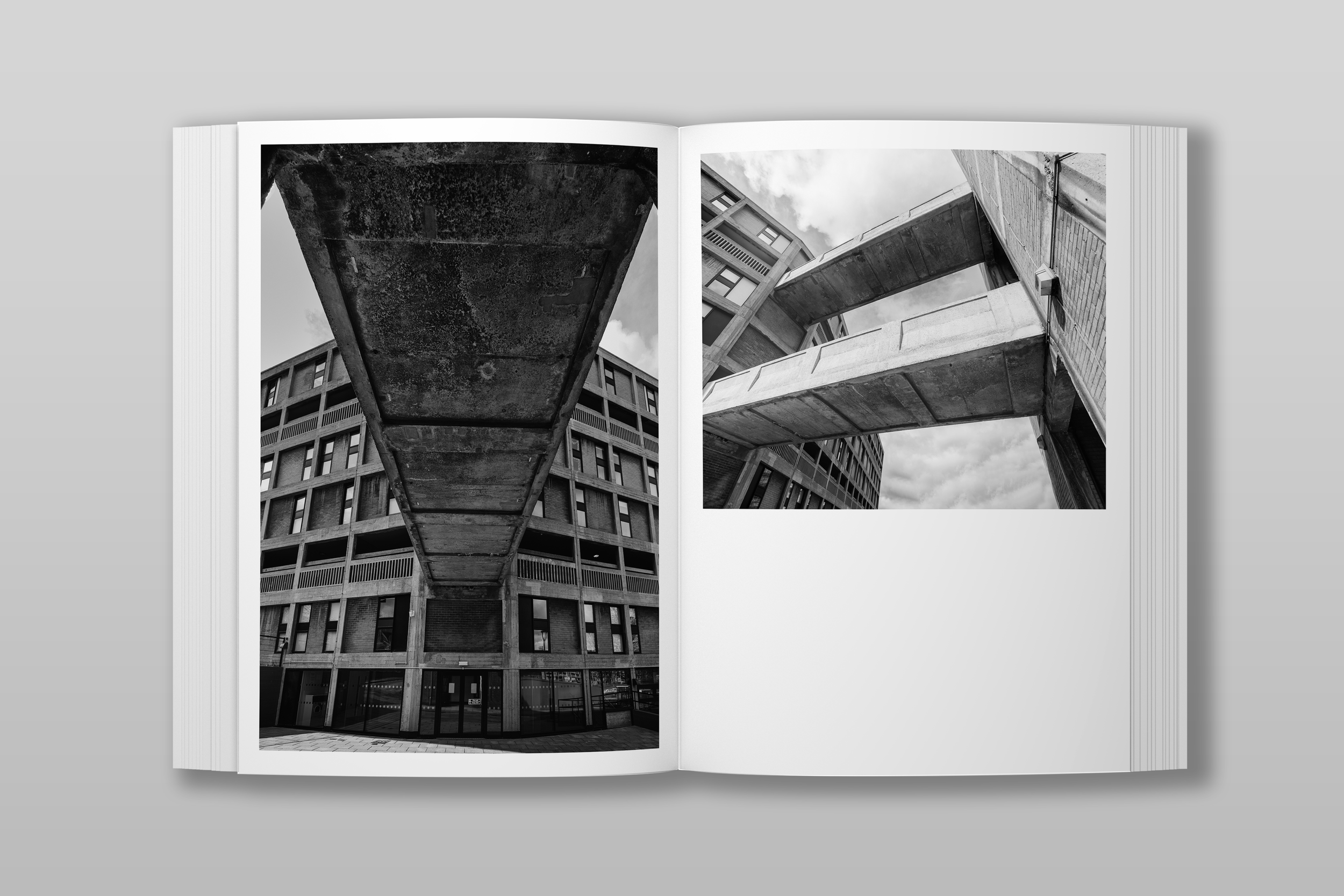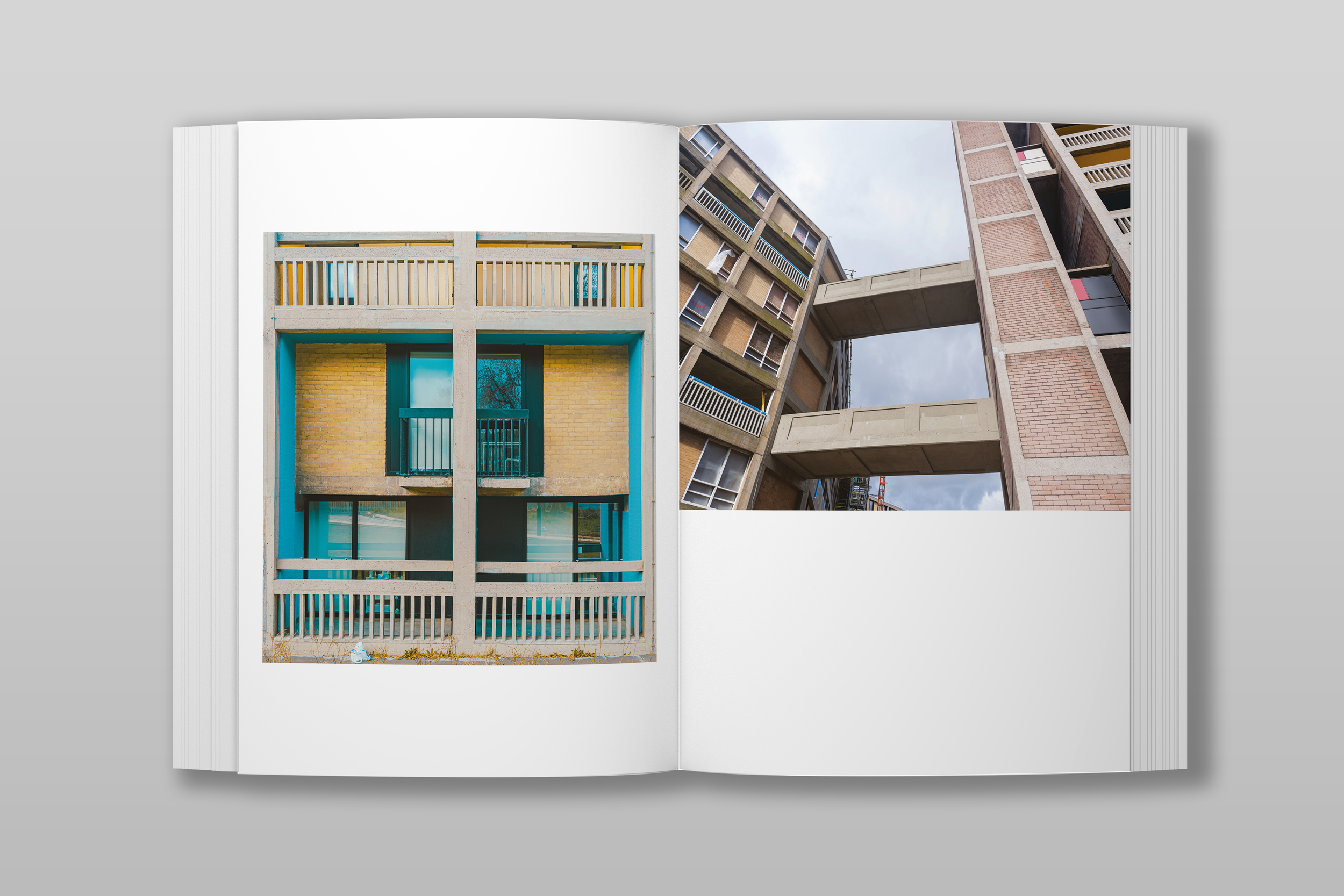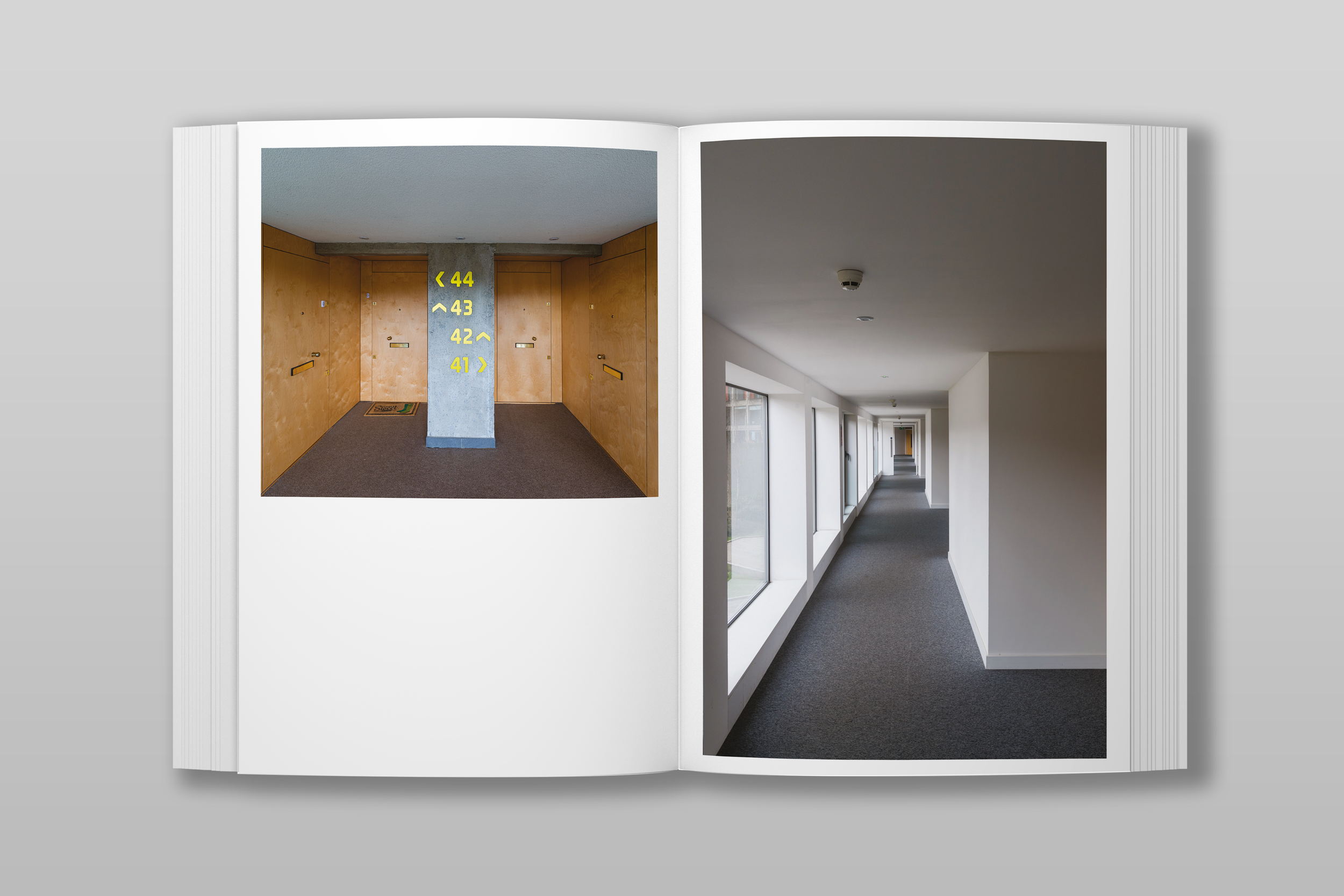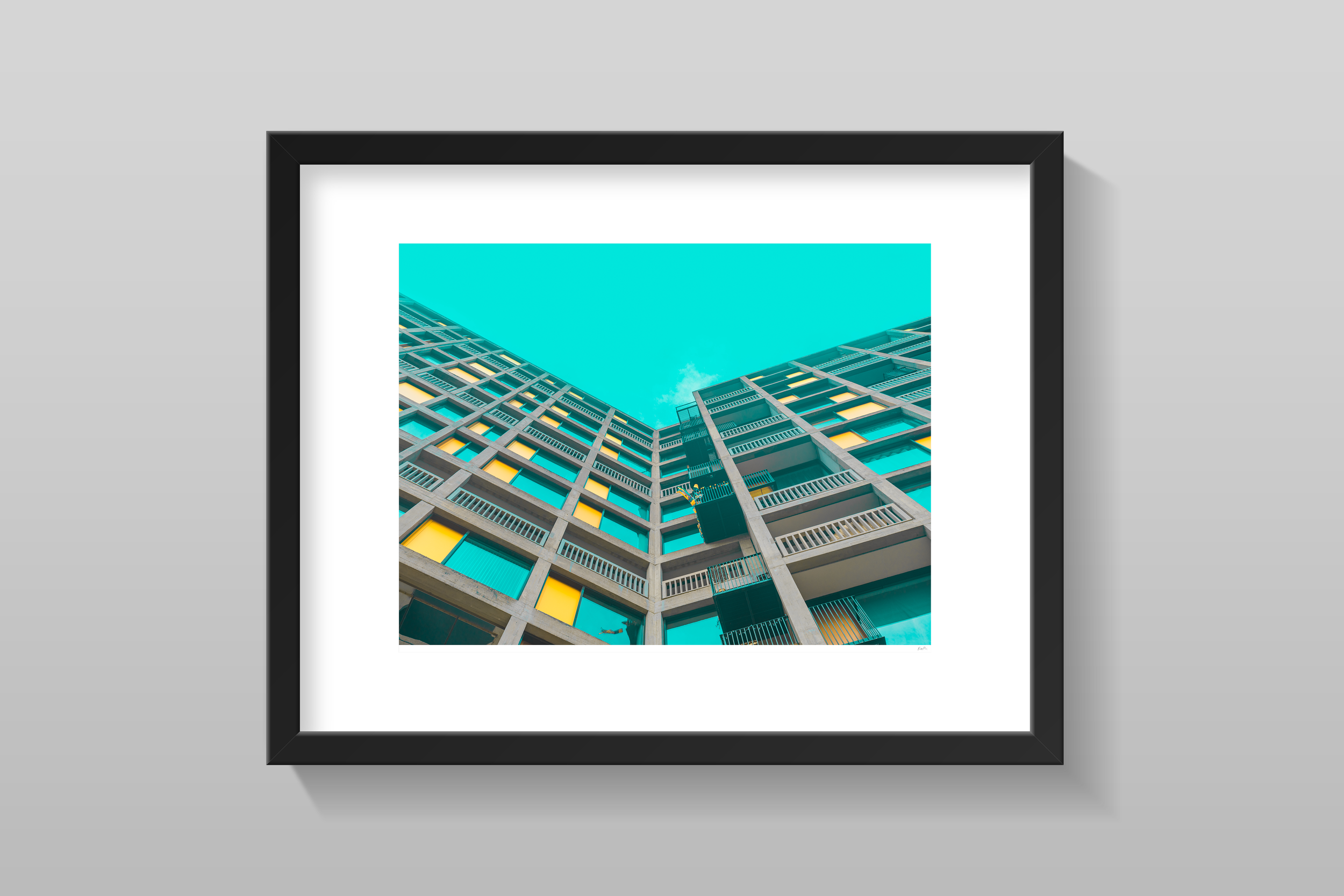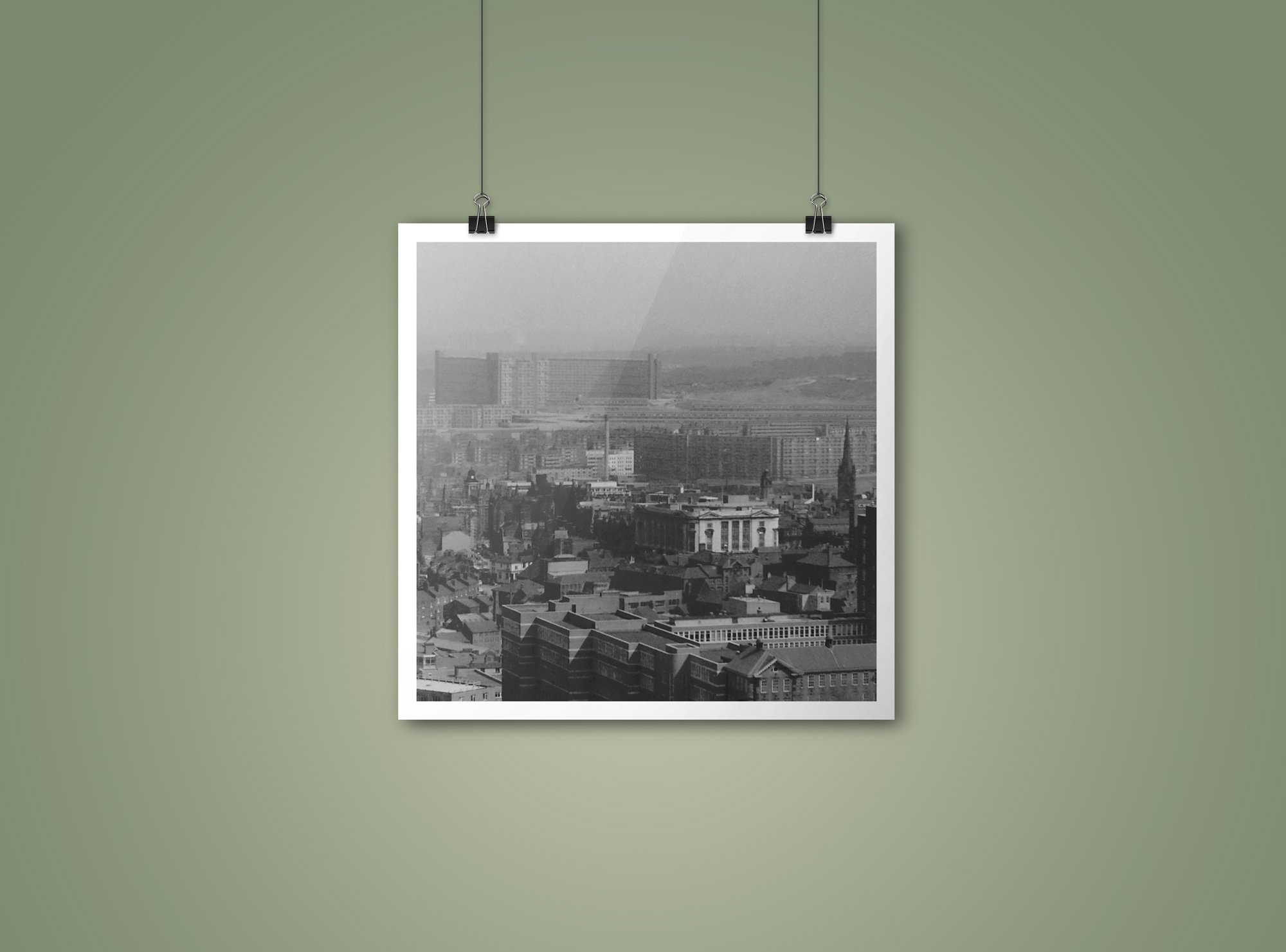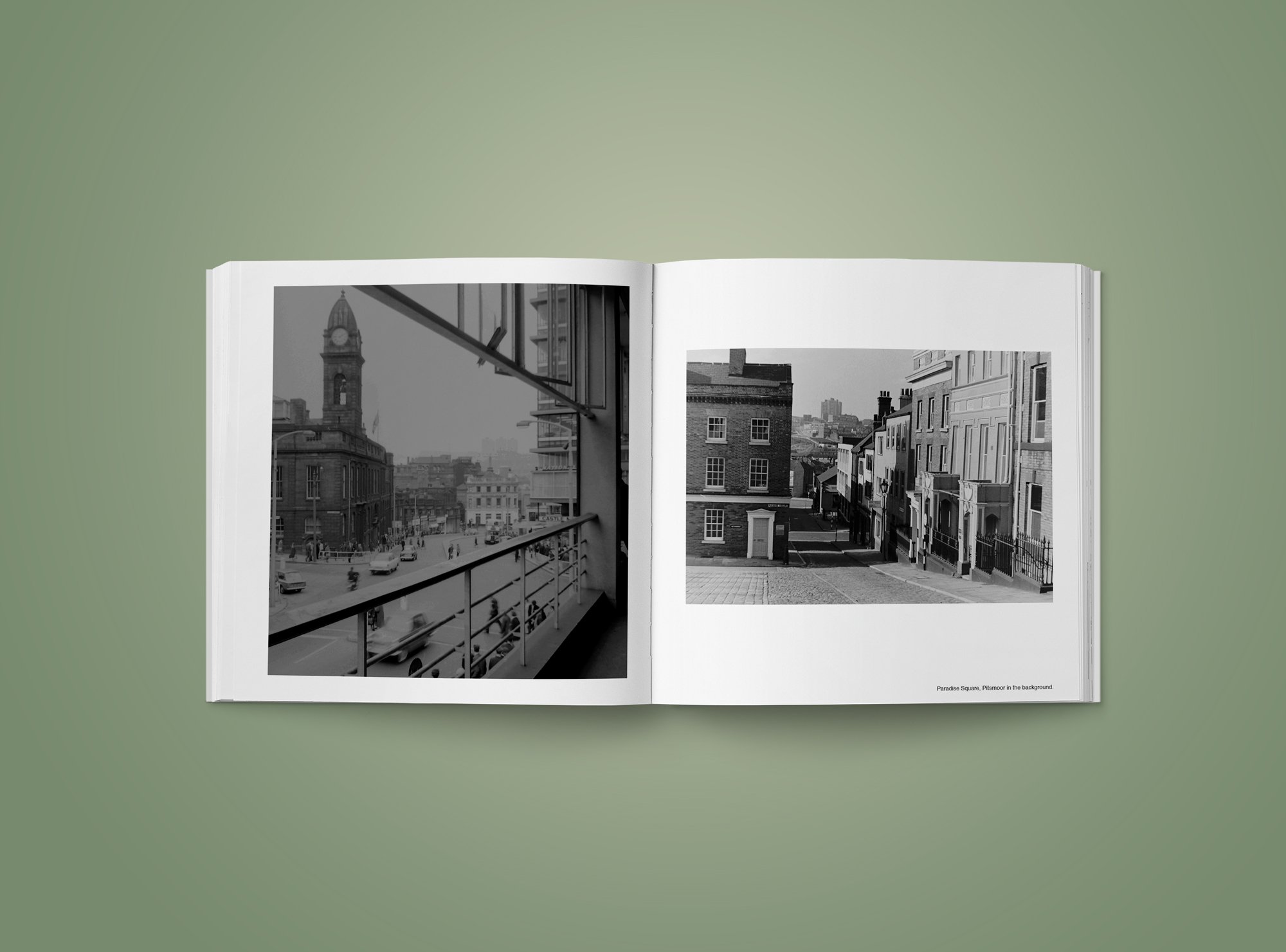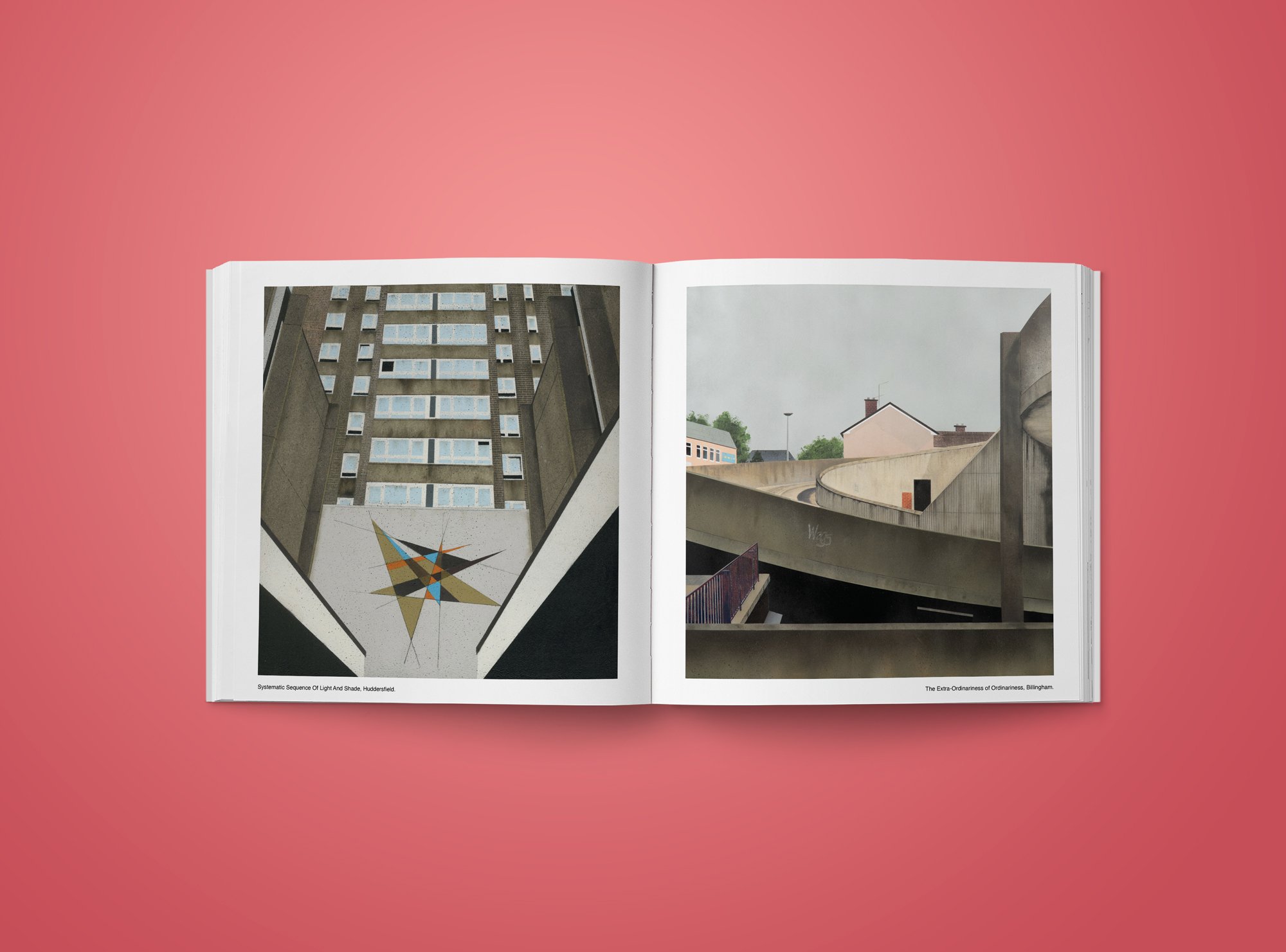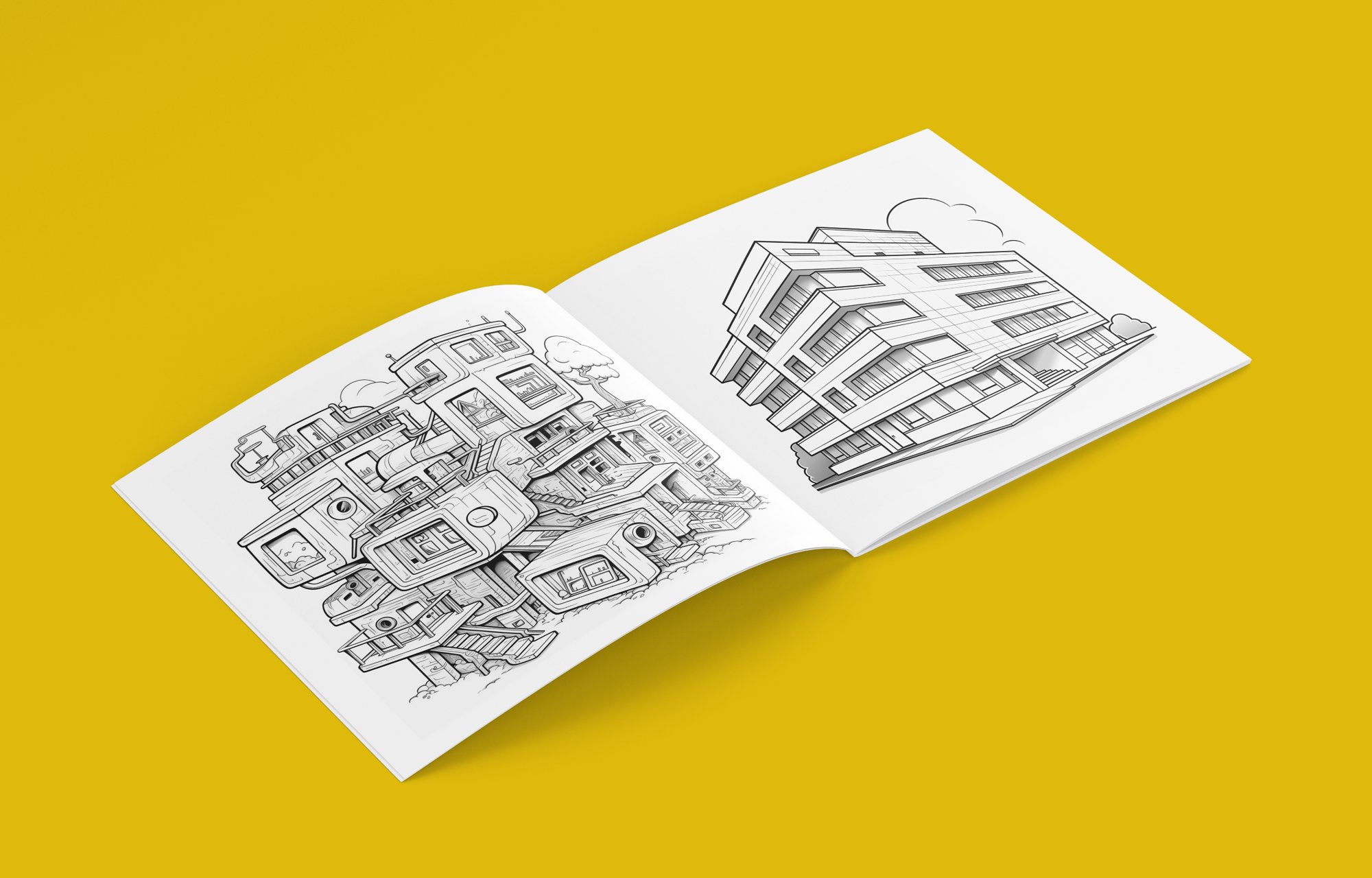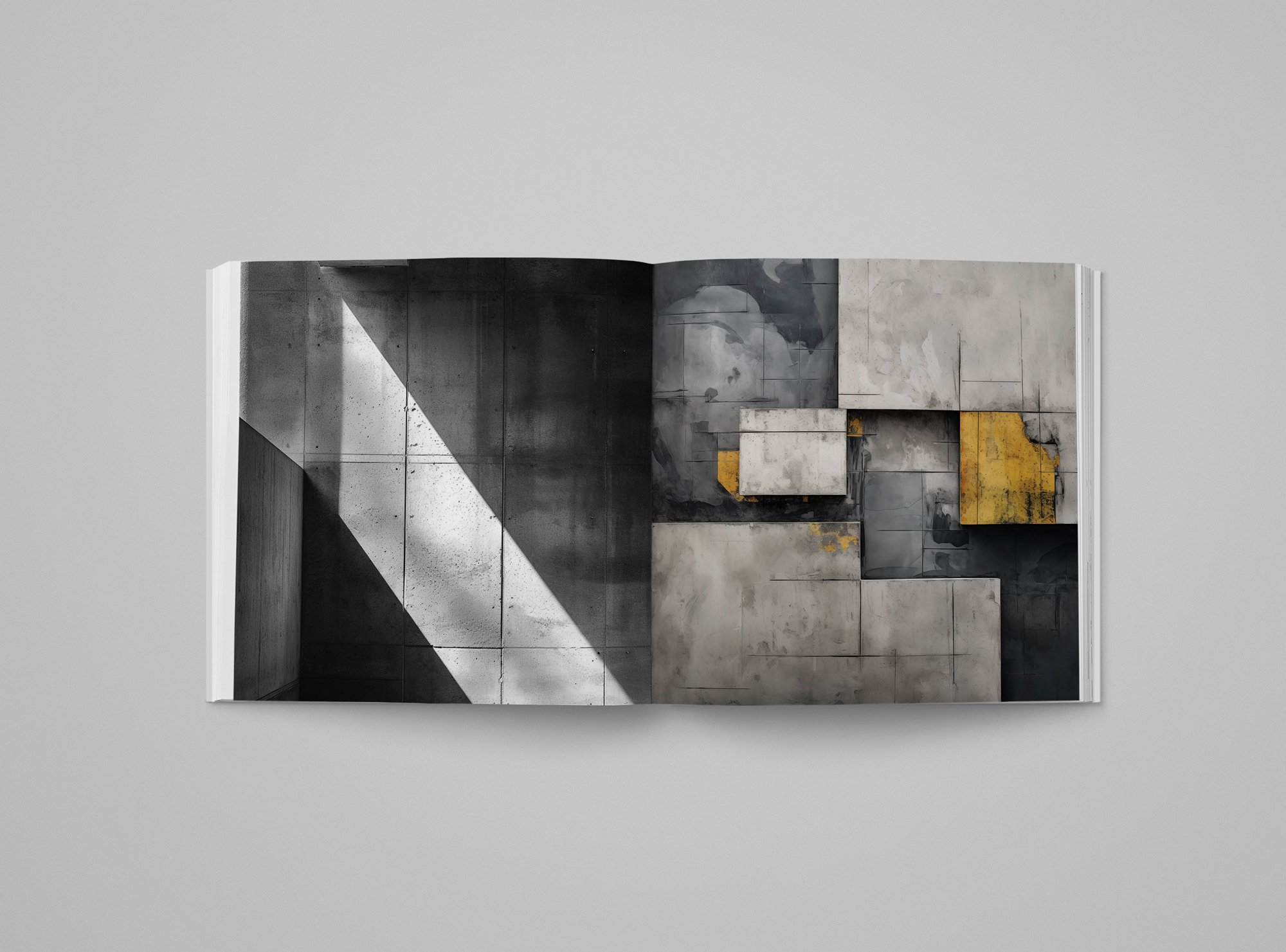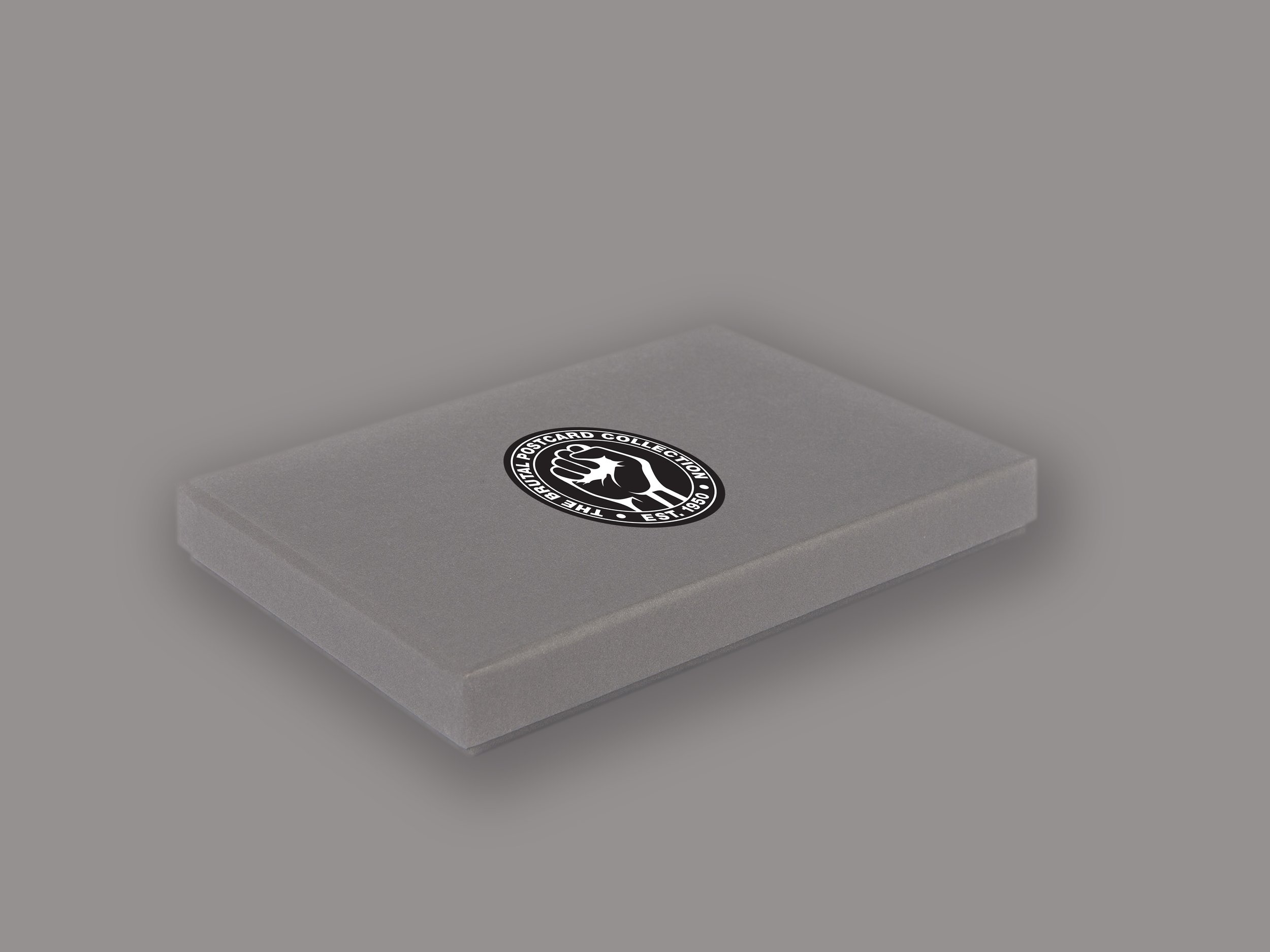Situation District Volume 1: Park Hill
64 Pages
175mm x 235mm
Perfect Bound
Cover: 350gsm Satin Matt Laminated
Pages: 170gsm Satin Silk
ISBN: 978-1-874171-06-5
Shipping Now
Park Hill has always been part of my life. Travelling into Sheffield, it was always there, greeting you at the end of your journey, a sleeping giant watching over Sheffield with a thoughtful eye.
It’s been an essential part of my thinking and journey, leading me to the conclusion that I’m not, in fact, documenting things. I’m attempting to reveal the beauty in everyday objects, recognising that the art of such buildings can influence the individual.
Some people think of my interest in Park Hill as some kind of ‘fetish’, but that ignores my personal attachment to the place. I was born and spent my childhood living on a nearby council estate, so for me, Park Hill has always been there, anchoring my view of the city. It’s a great example of social housing and it’s always been right on my doorstep. The scale of the site, the complex social planning and the bold architecture have all fed into my obsession with symmetry and synchronisation. I’m probably one of the few people in the city who has helped put on a music event and played at Park Hill.
Originally built between 1957 and 1961, Park Hill replaced the slums known locally as ‘Little Chicago’. The futuristic design was by architects Jack Lynn and Ivor Smith under the watchful eye of J.L. Womersley. The estate gradually fell into decline in the late 1970s and there were many reasons why. The Tory government’s destruction of heavy industry, mining communities and social housing all played a part, as it did in many industrial cities around the country. Underfunding, neglect and poor maintenance became a death kiss for the community.
In recent years, the buildings have been awarded listed status and are now being refurbished by Urban Splash, not only returning their former glory but adding even more influence from Le Corbusier’s Unité d’Habitation.
I love the place and I’m proud that it’s survived because, to me, the real spirit of Sheffield resides within these walls.
64 Pages
175mm x 235mm
Perfect Bound
Cover: 350gsm Satin Matt Laminated
Pages: 170gsm Satin Silk
ISBN: 978-1-874171-06-5
Shipping Now
Park Hill has always been part of my life. Travelling into Sheffield, it was always there, greeting you at the end of your journey, a sleeping giant watching over Sheffield with a thoughtful eye.
It’s been an essential part of my thinking and journey, leading me to the conclusion that I’m not, in fact, documenting things. I’m attempting to reveal the beauty in everyday objects, recognising that the art of such buildings can influence the individual.
Some people think of my interest in Park Hill as some kind of ‘fetish’, but that ignores my personal attachment to the place. I was born and spent my childhood living on a nearby council estate, so for me, Park Hill has always been there, anchoring my view of the city. It’s a great example of social housing and it’s always been right on my doorstep. The scale of the site, the complex social planning and the bold architecture have all fed into my obsession with symmetry and synchronisation. I’m probably one of the few people in the city who has helped put on a music event and played at Park Hill.
Originally built between 1957 and 1961, Park Hill replaced the slums known locally as ‘Little Chicago’. The futuristic design was by architects Jack Lynn and Ivor Smith under the watchful eye of J.L. Womersley. The estate gradually fell into decline in the late 1970s and there were many reasons why. The Tory government’s destruction of heavy industry, mining communities and social housing all played a part, as it did in many industrial cities around the country. Underfunding, neglect and poor maintenance became a death kiss for the community.
In recent years, the buildings have been awarded listed status and are now being refurbished by Urban Splash, not only returning their former glory but adding even more influence from Le Corbusier’s Unité d’Habitation.
I love the place and I’m proud that it’s survived because, to me, the real spirit of Sheffield resides within these walls.
64 Pages
175mm x 235mm
Perfect Bound
Cover: 350gsm Satin Matt Laminated
Pages: 170gsm Satin Silk
ISBN: 978-1-874171-06-5
Shipping Now
Park Hill has always been part of my life. Travelling into Sheffield, it was always there, greeting you at the end of your journey, a sleeping giant watching over Sheffield with a thoughtful eye.
It’s been an essential part of my thinking and journey, leading me to the conclusion that I’m not, in fact, documenting things. I’m attempting to reveal the beauty in everyday objects, recognising that the art of such buildings can influence the individual.
Some people think of my interest in Park Hill as some kind of ‘fetish’, but that ignores my personal attachment to the place. I was born and spent my childhood living on a nearby council estate, so for me, Park Hill has always been there, anchoring my view of the city. It’s a great example of social housing and it’s always been right on my doorstep. The scale of the site, the complex social planning and the bold architecture have all fed into my obsession with symmetry and synchronisation. I’m probably one of the few people in the city who has helped put on a music event and played at Park Hill.
Originally built between 1957 and 1961, Park Hill replaced the slums known locally as ‘Little Chicago’. The futuristic design was by architects Jack Lynn and Ivor Smith under the watchful eye of J.L. Womersley. The estate gradually fell into decline in the late 1970s and there were many reasons why. The Tory government’s destruction of heavy industry, mining communities and social housing all played a part, as it did in many industrial cities around the country. Underfunding, neglect and poor maintenance became a death kiss for the community.
In recent years, the buildings have been awarded listed status and are now being refurbished by Urban Splash, not only returning their former glory but adding even more influence from Le Corbusier’s Unité d’Habitation.
I love the place and I’m proud that it’s survived because, to me, the real spirit of Sheffield resides within these walls.







